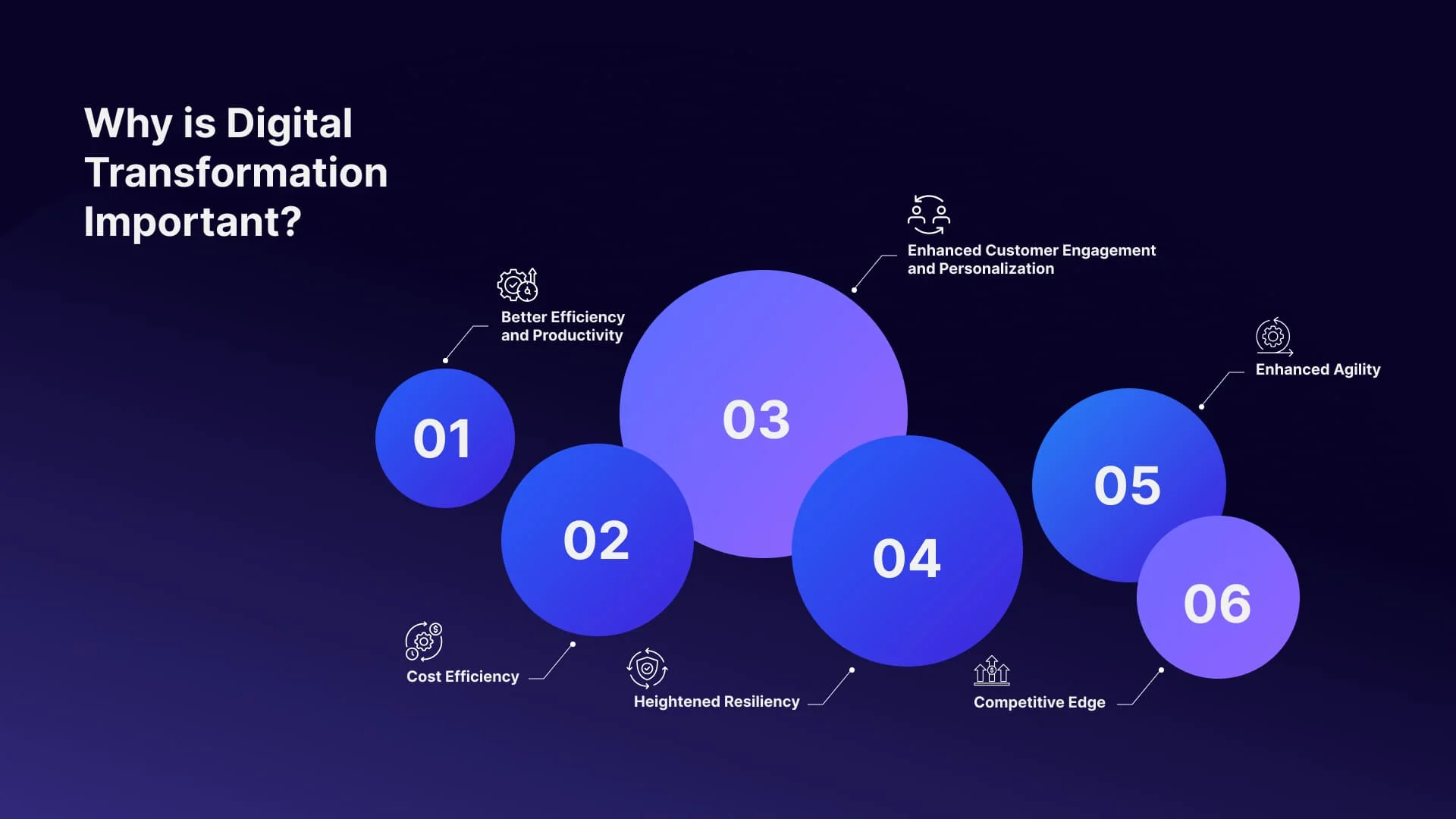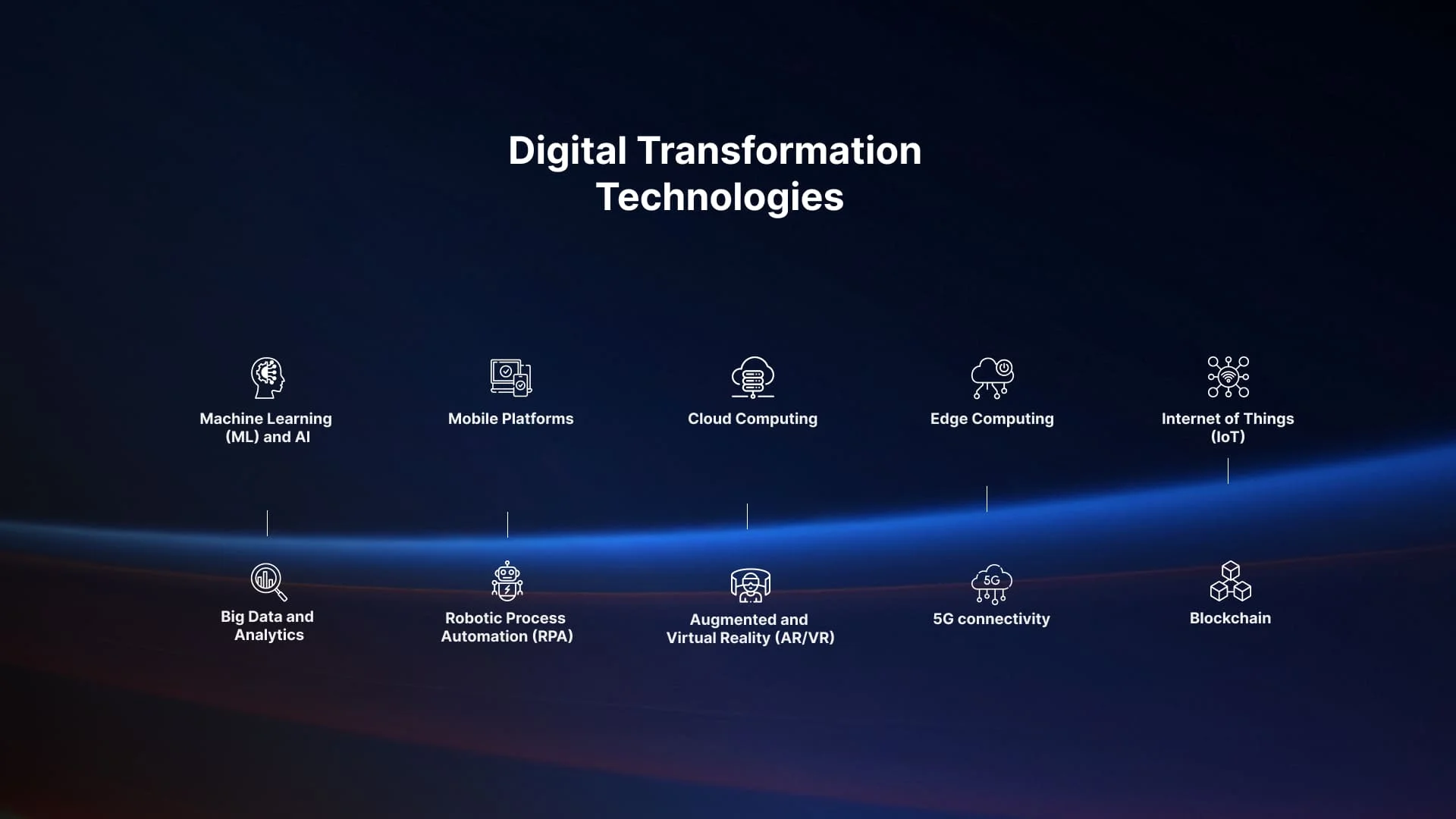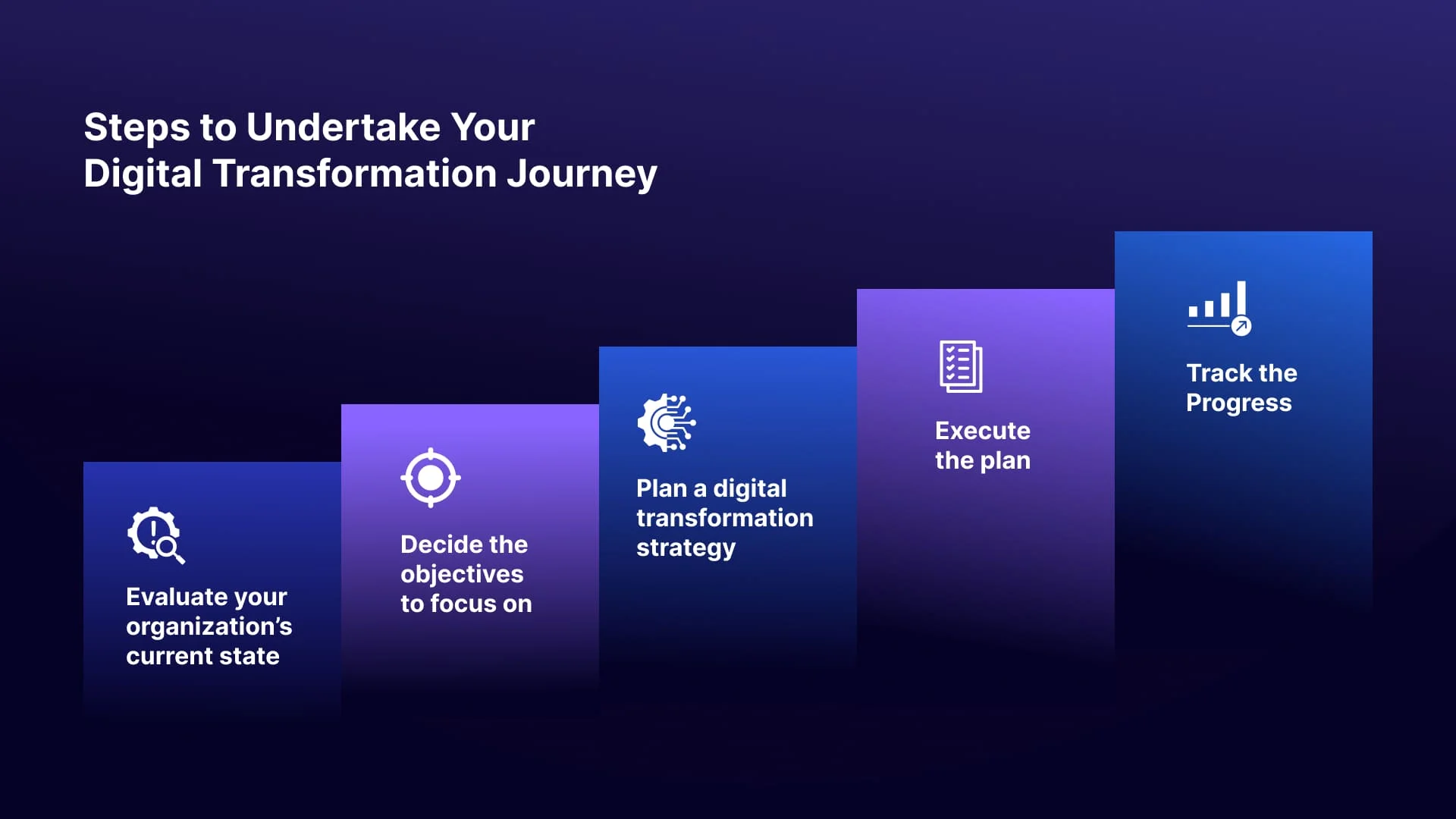Data Storage Decoded: Data Warehouse vs Data Lake Explained
Is Your Digital Transformation Initiative Really Working?
Digital transformation, more challenging than traditional change efforts, is crucial as technologies reshape industries in the digital age. In the midst of the rush of digital technologies reshaping industries, numerous companies are embarking on large-scale change initiatives to leverage emerging trends and stay competitive.
The pressing question remains: how many are truly witnessing tangible results from these endeavors?
Let’s delve into how companies, whether in the planning stages or already immersed in digital transformation initiatives, can strategically track and enhance their likelihood of successfully navigating digital changes within their business.
What is Digital Transformation?
Digital transformation integrates computer-based technologies into an organization’s operations to enhance engagement with the workforce and customers. The impact of digital transformation on evolving business models cannot be overstated, as it compels businesses to adapt and reinvent their approaches to meet new market and customer expectations through technology.
This initiative, vital for competitiveness, involves a comprehensive reevaluation of various organizational aspects. Successful transformations yield ongoing benefits, allowing organizations to promptly adapt to customer demands and leverage evolving technologies. As technology becomes a key economic driver, a well-executed digital transformation strategy positions organizations to thrive in the future.
However, achieving this requires not just technological adoption but also cultural adjustments for building agile organizations capable of change management and navigating uncertainty, particularly with the significant impact of emerging technologies like artificial intelligence.
Embracing new business models through digital transformation is essential for organizations to remain competitive, relevant, and capable of driving new revenue in an ever-changing digital landscape.

Why is Digital Transformation Important?
Business leaders who achieve their transformation objectives stand to enjoy numerous advantages, including the creation of long-term business value. The fundamental benefits of digital transformation, all intricately connected, not only contribute to immediate operational improvements but also significantly enhance business value by quantifying the return on investment (ROI) from these digital efforts. This pursuit of longer-term business value is crucial, as digital leaders have achieved greater annual total shareholder returns, linking digital transformation directly to an increase in business value and attractiveness to potential employees.
Better efficiency and productivity:
Digital transformation plays a key role in boosting the efficiency of business processes by automating manual processes, reducing errors, and enhancing overall productivity. An illustrative example is the adoption of cloud-based solutions, allowing employees to access data and collaborate seamlessly from any location worldwide. For substantial e-commerce businesses, strategically selecting cloud computing in specific regions can further reduce latency time, ensuring a smoother customer experience.
Heightened resiliency:
Digital transformation plays a pivotal role in fortifying a business’s security stance by facilitating the adoption of advanced measures like multifactor authentication, encryption, and network segmentation. These measures act as a robust defense, safeguarding businesses against potential cyber threats and minimizing the risk of data breaches.
Enhanced agility:
Embracing digital technology enables businesses to enhance their agility and adaptability, empowering them to swiftly respond to evolving market conditions and customer requirements. This competitive edge is especially pronounced when compared to businesses that lag in adapting to change.
Enhanced customer engagement and personalization:
As digital technology continues to advance, customer expectations undergo a transformation. Businesses are now anticipated to deliver seamless experiences across various channels. For instance, if you have a web app, developing mobile apps becomes imperative to retain existing customers and attract new ones.
Cost Efficiency:
Digital transformation contributes to cost savings by minimizing manual labor, streamlining processes, and boosting productivity. An illustration of this is the adoption of cloud storage, which not only trims hardware expenses but also diminishes the necessity for physical storage space.
Competitive Edge:
Businesses can harness the power of cutting-edge digital technologies such as artificial intelligence, machine learning, big data, and the Internet of Things to gain valuable insights into customer behavior, streamline operations, and enhance decision-making. This strategic adoption provides a competitive advantage in the dynamic business landscape.
Besides, organizations can also reap the rewards of improved resource management, improved responsiveness to market demands, fostered digital innovation, accelerated time to market for new products and services, augmented revenue, and sustained relevance as a direct outcome of implementing the right digital transformation initiatives.

Are You Using the Right Technology?
Take a look at the top digital technologies that serve as the catalysts for operational excellence and unprecedented business growth.
Cloud Computing: Cloud technology offers remarkable agility, scalability, and cost-efficiency. Migrating to the cloud can help businesses access applications and data without much hassle, propelling innovation and growth.
Mobile Technology: Personalization and continuous connectivity give mobile platforms all their power. These platforms integrate AR, AI, and IoT, among other technologies, enabling businesses to engage with their audience in novel ways.
Machine Learning (ML) and AI: ML and AI make use of data to deliver valuable insights for accurate decision-making, revolutionizing sales, marketing, and product development.
Edge Computing: Edge computing complements the cloud by bringing computation closer to the data source, reducing latency and enhancing real-time processing for time-critical applications.
Internet of Things (IoT): IoT devices generate a wealth of data, helping businesses with data-driven insights for optimized operations and informed decision-making.
Big Data and Analytics: Analyzing data from multiple sources can help businesses refine inventory management, improve customer experiences, and organize supply chain operations.
Robotic Process Automation (RPA) automates redundant and repetitive tasks, minimizing errors while enhancing accuracy. Thus, RPA drives gains in returns across various industries, from healthcare to customer support.
Augmented and Virtual Reality (AR/VR): These immersive technologies make use of realistic simulations to reshape customer interactions and revolutionize employee training.
5G: Low-latency connectivity paves the way for real-time data processing, powering IoT and enabling optimal efficiency of applications like gaming and AR/VR.
Blockchain: Blockchain technology instills trust in transactions through decentralization and transparency, ensuring secure and tamper-proof database across industries
An important point to note here is that these technologies work best together.
Say a manufacturer might integrate 5G to optimize the connection speed of IoT devices for more data availability. They can further utilize cloud computing to analyze this data and gain insights into operations across multiple factories, using edge analytics for an in-depth analysis of local plant conditions.
Steps to Undertake Your Digital Transformation Journey
1. Evaluate where you stand currently
The road to digital transformation demands careful planning. However, getting a headstart is challenging when your organization’s current state is unclear. To come up with an effective plan, evaluate your existing digital tools, practices, and potential.
You can also get feedback from existing customers and follow in the footsteps of digital transformation leaders to determine the right approach.
At the same time, identify the gap between your current digital state and the desired state across operations, technology, customer experience, business strategy, and leadership. Analyzing these gaps to prioritize areas needing strategic digital technology deployment can help you gain clarity and set a goal.
2. Zero in on the primary objectives
Before starting out, create a clear list of objectives tailored to your strategy and the steps to achieve them.
Nevertheless, here are certain fundamental questions that can help all businesses come up with their own unique answers to:
How can you improve the overall experience for your customers?
Can adopting new technologies and systems elevate the efficiency and cost-effectiveness of your operations?
How do you plan to embrace change and become more adaptable?
Do you have mechanisms in place to extract valuable insights from analytics, that can fasten decision-making processes?
Answering these questions can help organizations develop a bird-eye view while pinpointing areas that require attention on priority.
3. Come up with a digital transformation strategy
The next step would be creating a well-defined approach, aligning various factors, including your organization’s current performance, identified gaps, future business goals, digital transformation strategies, and business processes.
Here are the key steps to consider before you proceed:
Goal Alignment: Make sure that your plan is realistic and your business goals are in tune with the current state, identifying short, medium, and long-term objectives.
Budget Determination: Setting a budget is a vital checkpoint to make sure your digital transformation efforts stay on course. It will keep your expenses in check, making sure you are not just going with the flow.
Organizational Change: Cultivate a culture of adaptability and prepare your workforce for the same. Oftentimes, misunderstandings and refusal to rise above orthodox practices can hamper your transformation journey.
Technology Implementation: Get the technology that fits your strategy just right. Evaluate all available software options for every operation, ensuring they can contribute to your digital transformation projects collectively.
4. Execute the plan
Once you have the resources and the blueprint ready, go ahead one step at a time. Take the agile approach, allowing flexibility and avoiding overwhelming changes.
Break down your plan into periodical and manageable tasks, making necessary adjustments along the line.
5. Track Performance
To keep up with the extent of progress, it’s important to employ clearly defined Key Performance Indicators (KPIs) and metrics for each task/initiative.
How?
Employee Feedback: Gather reviews from your workforce to understand their perspective on the impact of your digital transformation initiatives.
Customer Feedback Changes: Monitor shifts in customer feedback to understand how the changes are influencing user satisfaction.
Hard Data Examination: Analyze concrete data across diverse initiatives to derive valuable insights.
Key metrics to track here include:
- Digital Adoption Levels
- ROI on Digital Investments
- Customer Ratings
- Digital Employee Experience

Tips to Develop a Successful Digital Transformation Strategy
Whether an organization is simply starting out or already in the early stages of adopting digital transformation initiatives, doing the following can be a good headstart.
- Gaining a comprehensive understanding of the market dynamics and the organization's current standing within it, considering both existing and potential customer bases.
- Conducting a forward-looking analysis to discern market trends allows the organization to proactively anticipate digital disruptions and position itself as a disruptor rather than being vulnerable to external disruptions.
- Identifying the intrinsic and potential value propositions through a dual evaluation process involving internal assessments and external research.
- Formulating a visionary perspective for the organization's future, outlining how its products and services should evolve to align seamlessly with evolving customer expectations and needs.
- Crafting a strategic digital transformation roadmap that provides a clear pathway for transitioning from the current organizational state to the envisioned future state.
Best Practices to Measure Business Value and ROI on Digital Transformation
Shifting your focus from traditional ROI metrics to Objectives and Key Results (OKRs) offers a more attainable approach to measuring outcomes.
With an OKR mindset, you can gauge the real impact of your digital transformation strategy through a holistic lens.
In that regard, consider the following best ROI practices when starting out with a digital transformation journey:
- Setting initial outcome goals even before starting implementation.
- Creating smaller goals or "micro-metrics" tailored explicitly for Agile experiments.
- Integrating business outcomes, such as revenue growth and time-to-market, into the evaluation process.
- Expanding the focus beyond cost savings to include strategic and operational impacts.
- Regularly utilizing metrics for systematic review and adjustment.
Possible Roadblocks to Look Out for
The best way to know if your digital transformation initiative is really working is to know where it can be lacking or what may be hindering growth.
Here are some potential shortcomings that may hamper your initiatives from delivering a successful digital transformation.
- Lack of Business Outcome Alignment
- Organizational Awareness Gap
- Micromanagement/Mismanagement of Agile Teams
- Lack of proactive training and excessive attention to detail
- Investing in technology without a solid business case
- Inability to translate technological jargon into executive language
- Lack of control over external vendors, leading to unmet expectations of timelines and deliverables
- Lack of Internal User Training
- Talent Loss to Competitors
- Slow Decision-Making Processes
- Poor Development Prioritization
Remember, success relies on 80% soft skills and 20% technical prowess. Thus, business leaders must prioritize steps to prevent and address the above issues, if present.
Recent Digital Transformation Trends to Consider
Amidst the whirlwind of technological evolution, especially propelled by generative AI, the dynamics of digital transformation have undergone a profound shift. The imperative to navigate through rapid, unpredictable events and economic constraints has transformed the essence of digital initiatives.
Some notable trends in this transformative landscape include:
- A shift from extensive, open-ended projects to more focused and clearly defined initiatives.
- An emphasis on shorter delivery timelines to achieve faster Return on Investment (ROI).
- Widespread adoption of Agile methodologies and digital transformation frameworks to navigate changing business conditions.
- Implementation of FinOps and other cost optimization techniques to better manage cloud spending.
- Strategic use of digital platforms and industry-specific cloud solutions to accelerate time-to-market.
- Increased reliance on hyper-automation not just to reduce costs but also to free up resources for innovation.
Staying ahead in the digital world requires constant adaptation and planning. Companies are embracing digital transformation to thrive, and a key trend is the rapid adoption of generative AI.
In the future, these might even merge into AI transformation, changing the goals and tools of digital transformation.
Early uses of generative AI could be to improve customer experience and developer productivity, leading to faster progress. However, there's a risk of companies falling behind if they don't adopt AI. This gap could actually push more companies to embrace digital transformation to catch up.
The message is clear: to succeed, companies need to be flexible, plan for the future, and consider AI as a powerful tool for digital transformation.
Email us or Talk to us at +91-98367-81929 or Simply Contact Us through the website.
Let's Connect












